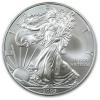| Online: | |
| Visits: | |
| Stories: |

| Story Views | |
| Now: | |
| Last Hour: | |
| Last 24 Hours: | |
| Total: | |
(What’s Left of) Our Economy: Has the Fed Gotten Savings Incentives Completely Wrong?
wallstreetexaminer.com / by Alan Tonelson via RealityChek /
As many of you may know, the Federal Reserve yesterday raised the interest rate it directly controls above an effective zero level for the first time in seven years. So it’s especially interesting and important that a post from The Economist just before the rate hike made a strong case that one of the main rationales for keeping interest rates so low has backfired big-time on ordinary Americans and on the consumer spending still driving most U.S. economic activity.
Just after the height of the financial crisis, the Fed lowered its so-called funds rate to zero (actually, it was a range of zero to 0.25 percent) in part to make sure that the carnage that was spreading from housing to Wall Street and increasingly to the rest of the economy wouldn’t scare households into closing their wallets,and therefore choke off even more growth. The federal funds rate doesn’t directly set consumer borrowing rates – it’s the rate offered by the central bank to the country’s biggest banks. But the Fed was hoping that super-easy money would have twin stimulative effects.
First, when these banks’ borrowing costs fall, they can offer cheaper loans to both consumer and business borrowers and stay just as profitable. And the more affordable credit becomes, the more borrowers were expected to use. Second, the Fed was hoping that super-low rates would penalize saving. A rock-bottom federal funds rate would drive way down the returns on such popular consumer savings vehicles as money market funds and certificates of deposit and savings bonds, and convince Americans that they were better off spending existing savings and incoming income rather than receive literally no reward for thriftiness.
The post (What’s Left of) Our Economy: Has the Fed Gotten Savings Incentives Completely Wrong? appeared first on Silver For The People.
Source: http://silveristhenew.com/2015/12/18/whats-left-of-our-economy-has-the-fed-gotten-savings-incentives-completely-wrong/



